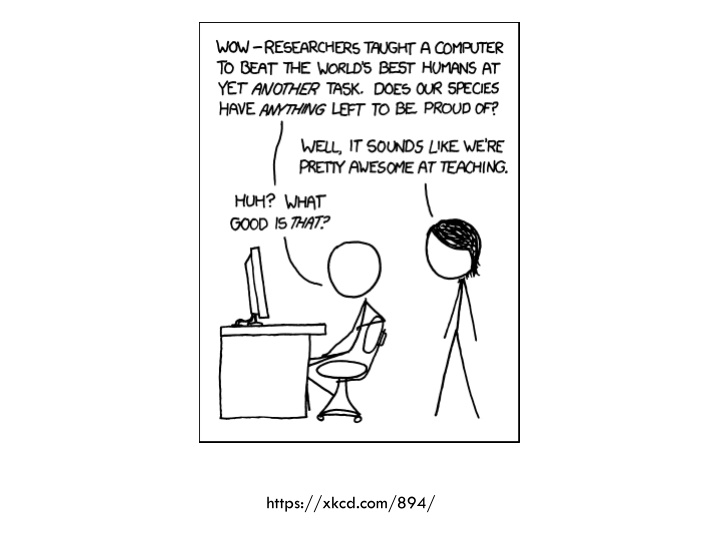
Introduction to Machine Learning: Understanding the Basics and Goals
"Explore the fundamental concepts of machine learning, including its origin, applications, and goals. Learn about common techniques, tools, and frameworks used in machine learning, as well as how to handle large datasets and conduct proper experimentation and evaluation. Dive into the world of predictive analytics and unlock the power of machine learning in various fields."
Uploaded on | 0 Views
Download Presentation

Please find below an Image/Link to download the presentation.
The content on the website is provided AS IS for your information and personal use only. It may not be sold, licensed, or shared on other websites without obtaining consent from the author. If you encounter any issues during the download, it is possible that the publisher has removed the file from their server.
You are allowed to download the files provided on this website for personal or commercial use, subject to the condition that they are used lawfully. All files are the property of their respective owners.
The content on the website is provided AS IS for your information and personal use only. It may not be sold, licensed, or shared on other websites without obtaining consent from the author.
E N D
Presentation Transcript
INTRODUCTION TO MACHINE LEARNING David Kauchak CS 158 Fall 2016
Why are you here? What is Machine Learning? Why are you taking this course? What topics would you like to see covered?
Machine Learning is Machine learning is a subfield of computer science that evolved from the study of pattern recognition and computational learning theory in artificial intelligence.
Machine Learning is Machine learning is programming computers to optimize a performance criterion using example data or past experience. -- Ethem Alpaydin The goal of machine learning is to develop methods that can automatically detect patterns in data, and then to use the uncovered patterns to predict future data or other outcomes of interest. -- Kevin P. Murphy The field of pattern recognition is concerned with the automatic discovery of regularities in data through the use of computer algorithms and with the use of these regularities to take actions. -- Christopher M. Bishop
Machine Learning is Machine learning is about predicting the future based on the past. -- Hal Daume III
Machine Learning is Machine learning is about predicting the future based on the past. -- Hal Daume III past future Training Data Testing Data model/ predictor model/ predictor
Machine Learning, aka data mining: data analysis, not prediction, though often involves some shared techniques inference and/or estimation in statistics pattern recognition in engineering signal processing in electrical engineering induction optimization
Goals of the course: learn about Different machine learning problems Common techniques/tools used theoretical understanding practical implementation Proper experimentation and evaluation Dealing with large (huge) data sets Parallelization frameworks Programming tools
Goals of the course Be able to laugh at these signs (or at least know why one might )
Administrative Course page: http://www.cs.pomona.edu/~dkauchak/classes/cs158/ Assignments Weekly Mostly programming (Java, mostly) Some written/write-up Generally due Sunday evenings Two midterm exams and one final Late Policy Collaboration
Course expectations Plan to stay busy! Applied class, so lots of programming Machine learning involves math
Other things to note Videos before class Lots of class participation! Read the book (it s good)
Machine learning problems What high-level machine learning problems have you seen or heard of before?
Data examples Data
Data examples Data
Data examples Data
Data examples Data
Supervised learning examples label label1 label3 labeled examples label4 label5 Supervised learning: given labeled examples
Supervised learning label label1 model/ predictor label3 label4 label5 Supervised learning: given labeled examples
Supervised learning model/ predictor predicted label Supervised learning: learn to predict new example
Supervised learning: classification label apple Classification: a finite set of labels apple banana banana Supervised learning: given labeled examples
Classification Example Differentiate between low-risk and high-risk customers from their income and savings
Classification Applications Face recognition Character recognition Spam detection Medical diagnosis: From symptoms to illnesses Biometrics: Recognition/authentication using physical and/or behavioral characteristics: Face, iris, signature, etc ...
Supervised learning: regression label -4.5 Regression: label is real-valued 10.1 3.2 4.3 Supervised learning: given labeled examples
Regression Example Price of a used car y = wx+w0 x : car attributes (e.g. mileage) y : price 26
Regression Applications Economics/Finance: predict the value of a stock Epidemiology Car/plane navigation: angle of the steering wheel, acceleration, Temporal trends: weather over time
Supervised learning: ranking label 1 Ranking: label is a ranking 4 2 3 Supervised learning: given labeled examples
Ranking example Given a query and a set of web pages, rank them according to relevance
Ranking Applications User preference, e.g. Netflix My List -- movie queue ranking iTunes flight search (search in general) reranking N-best output lists
Unsupervised learning Unupervised learning: given data, i.e. examples, but no labels
Unsupervised learning applications learn clusters/groups without any label customer segmentation (i.e. grouping) image compression bioinformatics: learn motifs
Reinforcement learning left, right, straight, left, left, left, straight GOOD BAD left, straight, straight, left, right, straight, straight left, right, straight, left, left, left, straight 18.5 -3 left, straight, straight, left, right, straight, straight Given a sequence of examples/states and a reward after completing that sequence, learn to predict the action to take in for an individual example/state
Reinforcement learning example Backgammon WIN! LOSE! Given sequences of moves and whether or not the player won at the end, learn to make good moves
Reinforcement learning example http://www.youtube.com/watch?v=VCdxqn0fcnE
Other learning variations What data is available: Supervised, unsupervised, reinforcement learning semi-supervised, active learning, How are we getting the data: online vs. offline learning Type of model: generative vs. discriminative parametric vs. non-parametric
Representing examples examples What is an example? How is it represented?
Features examples features How our algorithms actually view the data f1, f2, f3, , fn f1, f2, f3, , fn Features are the questions we can ask about the examples f1, f2, f3, , fn f1, f2, f3, , fn
Features examples features How our algorithms actually view the data red, round, leaf, 3oz, green, round, no leaf, 4oz, Features are the questions we can ask about the examples yellow, curved, no leaf, 8oz, green, curved, no leaf, 7oz,
Classification revisited label examples red, round, leaf, 3oz, apple green, round, no leaf, 4oz, apple model/ classifier yellow, curved, no leaf, 8oz, banana banana green, curved, no leaf, 7oz, During learning/training/induction, learn a model of what distinguishes apples and bananas based on the features
Classification revisited Apple or banana? model/ classifier red, round, no leaf, 4oz, The model can then classify a new example based on the features
Classification revisited model/ classifier Apple red, round, no leaf, 4oz, Why? The model can then classify a new example based on the features
Classification revisited Training data Test set label examples red, round, leaf, 3oz, apple red, round, no leaf, 4oz, ? green, round, no leaf, 4oz, apple yellow, curved, no leaf, 4oz, banana banana green, curved, no leaf, 5oz,
Classification revisited Training data Test set label examples red, round, leaf, 3oz, apple red, round, no leaf, 4oz, ? green, round, no leaf, 4oz, apple yellow, curved, no leaf, 4oz, banana Learning is about generalizing from the training data banana green, curved, no leaf, 5oz, What does this assume about the training and test set?
Past predicts future Training data Test set
Past predicts future Training data Test set Not always the case, but we ll often assume it is!
Past predicts future Training data Test set Not always the case, but we ll often assume it is!
More technically We are going to use the probabilistic model of learning There is some probability distribution over example/label pairs called the data generating distribution Both the training data and the test set are generated based on this distribution What is a probability distribution?
Probability distribution Describes how likely (i.e. probable) certain events are
Probability distribution Training data High probability Low probability round apples curved apples curved bananas red bananas apples with leaves yellow apples



